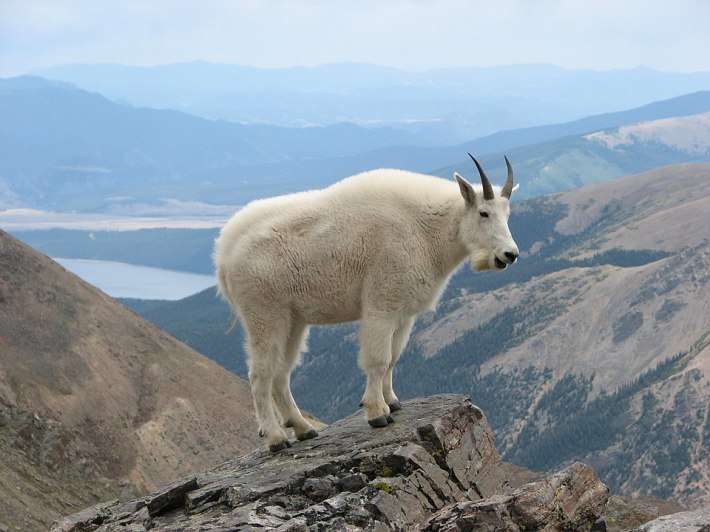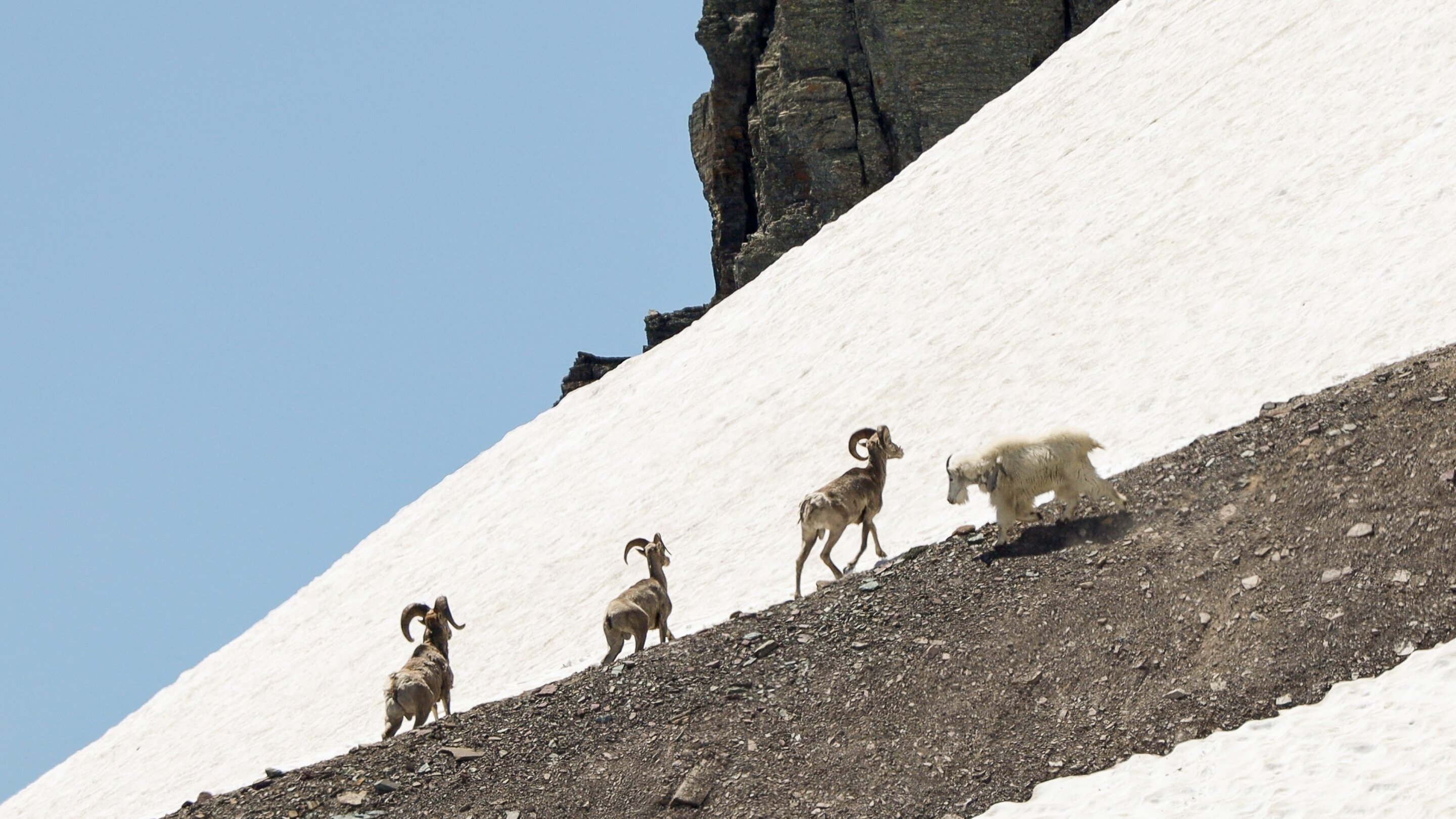Mountain goats do not just like to lick salt; they crave it. The goats are known to travel as many as 15 miles in search of natural salt deposits to slurp up sodium and other essential nutrients not included in their regular diet. Mountain goats go so hard for sodium that they will tongue a rock or plant recently drenched in the salty urine of a human tourist.
But goats are not the only animals questing for salt at high altitudes in the United States. Another ungulate, the bighorn sheep, roams the same mountains in search of the same salt. Melting glaciers continue to expose more of these precious mineral deposits, altering the abundance and distribution of coveted resources for survival. In Glacier National Park in Montana, the bighorn sheep and mountain goats compete for access to these deposits. Yet despite the species' similar size, the mountain goats always come out on top, according to a new paper published Monday in the journal Frontiers of Ecology and Evolution. One could say their analysis proved the mountain goat remained the goat.
This news is great for mountain goats, bad for sheep, and ominous to all other creatures unfortunate enough to weather the climate crisis our species created. The authors argue that interspecies conflicts like these may happen more and more often as climate change shifts and swallows sparse physical resources such as minerals, water, snow, and shade.
Scientists have long studied competition among individuals of a single species, but know far less about conflicts between different kinds of animals. So the authors delved into decades of scientific studies to uncover other examples of this kind of conflict among mammals. They found dozens of examples. In the Namib Desert, researchers observed black rhinos shooing gemsbok antelopes away from scarce patches of shade, as well as gemsbok shooing away chacma baboons from water. In the savannas of Zimbabwe, researchers observed elephants driving away just about everyone from the water: buffalo, giraffe, impala, kudu, roan and sable antelopes, warthog, waterbuck, plain's zebra, and wildebeest. In the Himalayas of Bhutan, researchers noted yak dominating takins over mineral deposits. One rule appeared to dominate all these skirmishes: The bigger guys mostly won out.
At a glance, a bighorn sheep and a mountain goat might appear equally matched. They weigh about the same and both have a big pair of horns sprouting from their skull. Both are good at scrambling up the steep, rocky cliffs at high elevation. Bighorn sheep are true sheep, meaning a species in the genus Ovis. But mountain goats are not true goats, meaning they are not a species in the genus Capra. They are actually goat-antelopes, more closely related to the chamois, a fancy-looking goat-antelope in Europe, and the goral, a less fancy-looking goat-antelope in Asia. To be clear, the fact that a mountain goat is not a true goat does not make it any less of a goat in my mind. And a fancy goat is not necessarily a better goat; in my mind, the scruffier the goat, the truer it seems.


Anyway, the difference likely comes down to personality. Mountain goats are famously aggressive, mostly toward other mountain goats but occasionally toward other species (last year a very impressive mountain goat fatally impaled a grizzly bear in Canada). In the more than 120 skirmishes the researchers observed in Glacier National Park, Caw Ridge in Alberta, and Mount Evans in Colorado, the goats merely had to show up to dissuade the sheep from lingering too long. Upon the mere sight of a mountain goat, many sheep walked or skipped away.
The authors were careful not to draw sweeping conclusions from the study. It does not mean that our warming world will eventually be ruled by its largest creatures with the pointiest horns. But it does offer a model, at least in the extreme environment of the cold, high mountains, of how potentially waning and changing resources may spark new conflict between species that are quite accustomed to minding their own business. The case of the battling bighorns and mountain goats also offers insight into possible conservation tactics: For example, replacing some of the lower-altitude salt licks destroyed by roads might alleviate some of the competition. It's probably our fault they're fighting, and the least we can do is give them some salt that doesn't come from our pee.






